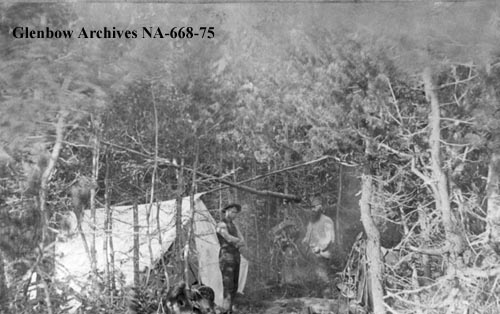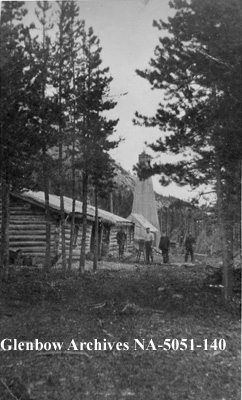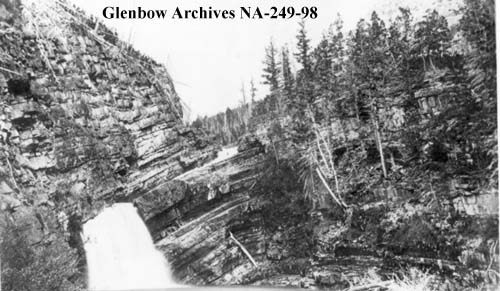The prairies meet the Rockies in Waterton Lakes National Park. The park was first established on May 30, 1895, making it Canada’s fourth national park. Waterton is celebrating its 125th birthday this year. The park was originally named Waterton Lakes Forest Park Reserve and only covered an area of 140 square-kilometres around the lakes. In 1911 the name was changed to Waterton Lakes Dominion Park after the creation of the Dominion Parks Branch. Finally, in 1930 with the passing of the Canada National Parks Act, the park’s name was changed again to what we know it today. The size of the park has also changed over the years. It now encompasses an area of 505 square-kilometres. Although the park is only celebrating 125 years, the area had been used much longer. The earliest archaeological evidence of human habitation, namely hunting and gathering, dates back more than 10,000 years. In honour of this special milestone please enjoy a collection of some of the earliest photographs from the Waterton Lakes area.

Waterton Lakes National Park sits within the traditional territory of the Niitsitapi (Blackfoot) peoples. They refer to the area as Paahtomahksikimi (pronounced Paw-toe-MOCK-sick-ih-mee), which translates to ‘Inner Sacred Lake within the Mountains’. The park’s current name is derived from the chain of lakes, originally named by Lieutenant Blakiston, who was a member of the Palliser Expedition, and honours Squire Charles Waterton, a British naturalist.

One of the earliest settlers to the area was John George ‘Kootenai’ Brown. He became the park’s first game guardian and fisheries inspector, and later the first park official back in 1911.

Along with Glacier National Park in Montana, Waterton Lakes National Park is part of the Waterton-Glacier International Peace Park. The cross-border park was created in 1932 as a symbol of peace and goodwill between Canada and the United States.

One of Waterton’s most recognizable landmarks is the Prince of Wales Hotel. Although no Prince of Wales has ever actually visited the hotel, it was named after the popular Edward VIII, who was the Prince of Wales. The hotel was built by the Great Northern Railway and its doors first opened in the summer of 1927. In 1993 the hotel was recognized as a National Historic Site of Canada.

In honour of the 125th celebration, Parks Canada put together a list of their 125 favourite facts about Waterton Lakes National Park. You can also start planning your Waterton escape by visiting the My Waterton website.














If you liked this post you might also enjoy these similar stories about different national parks and national historic sites in Western Canada: Roger’s Pass, Jasper National Park, and Lake Louise.

The photos above were collected from the Glenbow Archives. Additional information can be found for each photograph on the Glenbow website by searching the identification number that is printed on each photo. There is also the option to purchase a high resolution copy. Stay tuned for additional posts featuring historical photos from Alberta. We’d love to know what you think in the comment section below.




